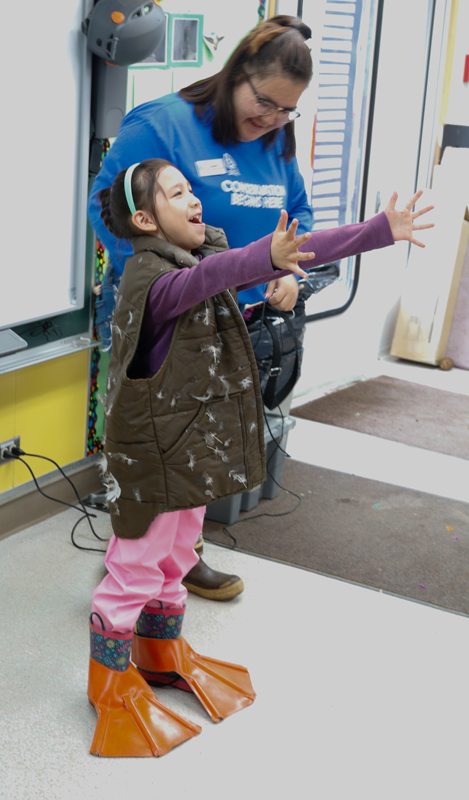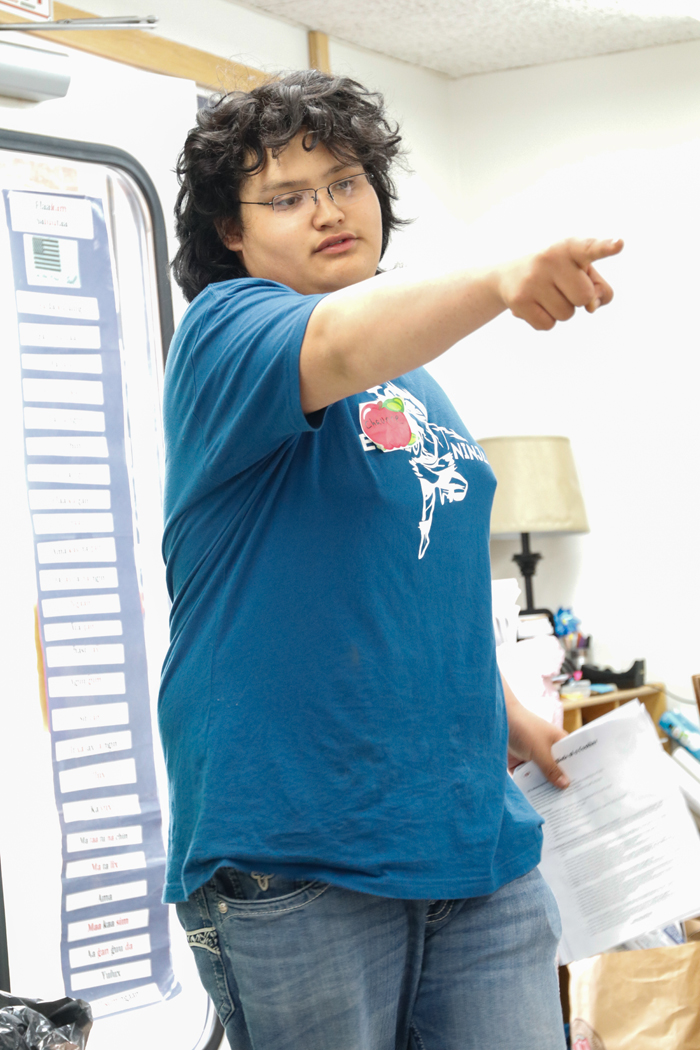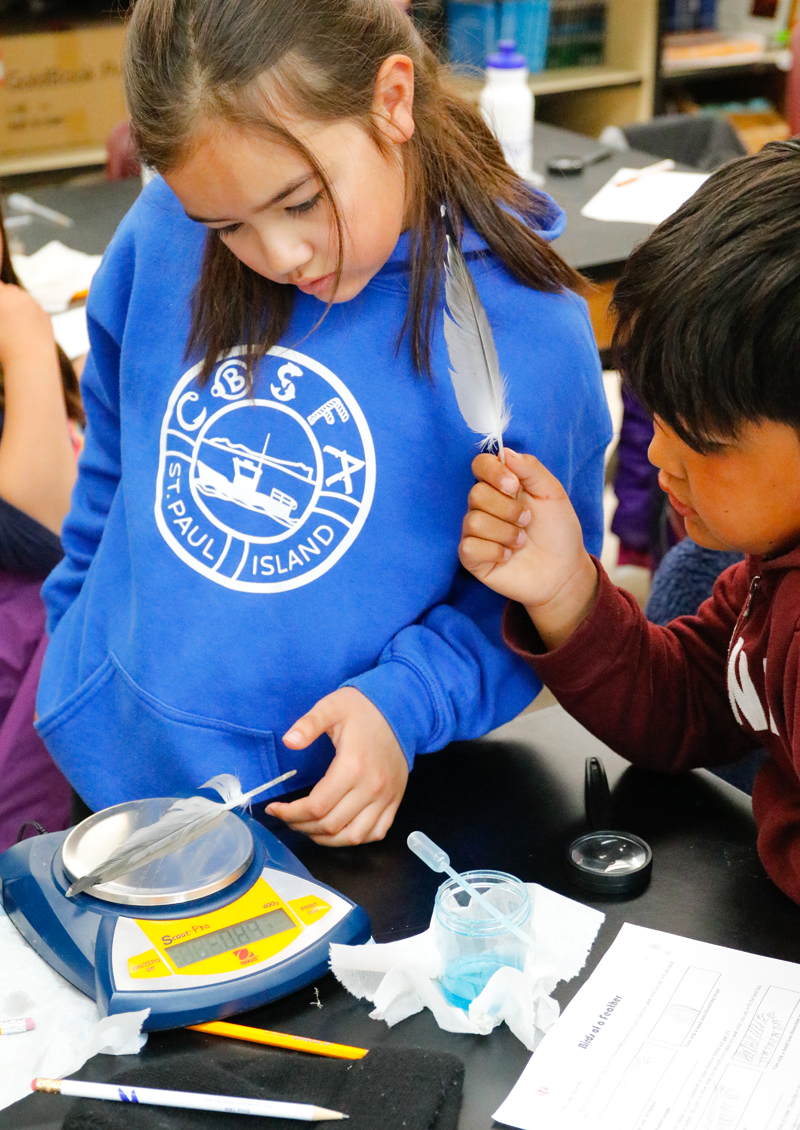On our first day of the 2019 Seabird Camp we explored themes of seabird survival.

Campers from last year refreshed their memories by playing seabird memory. The seabird matching game made us all remember seabird names and identification marks.
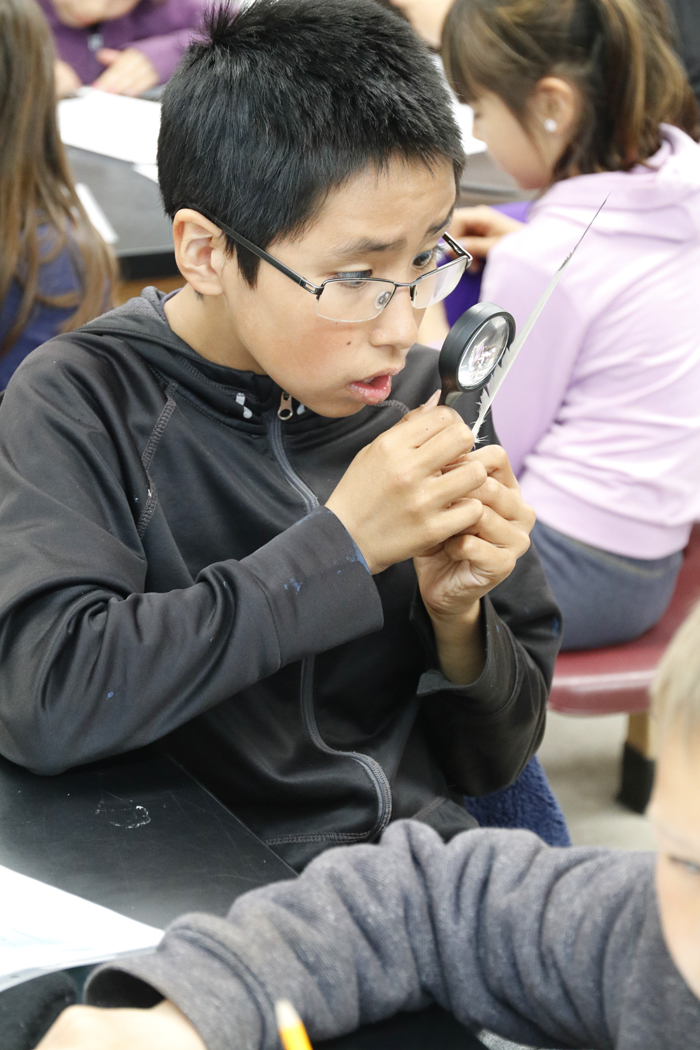
We introduced seabirds with a fun activity about seabird adaptations. We looked at how seabirds use downy feathers, webbed feet, salt & oil glands to survive while dressing up Sienna as a funny “seabird”.
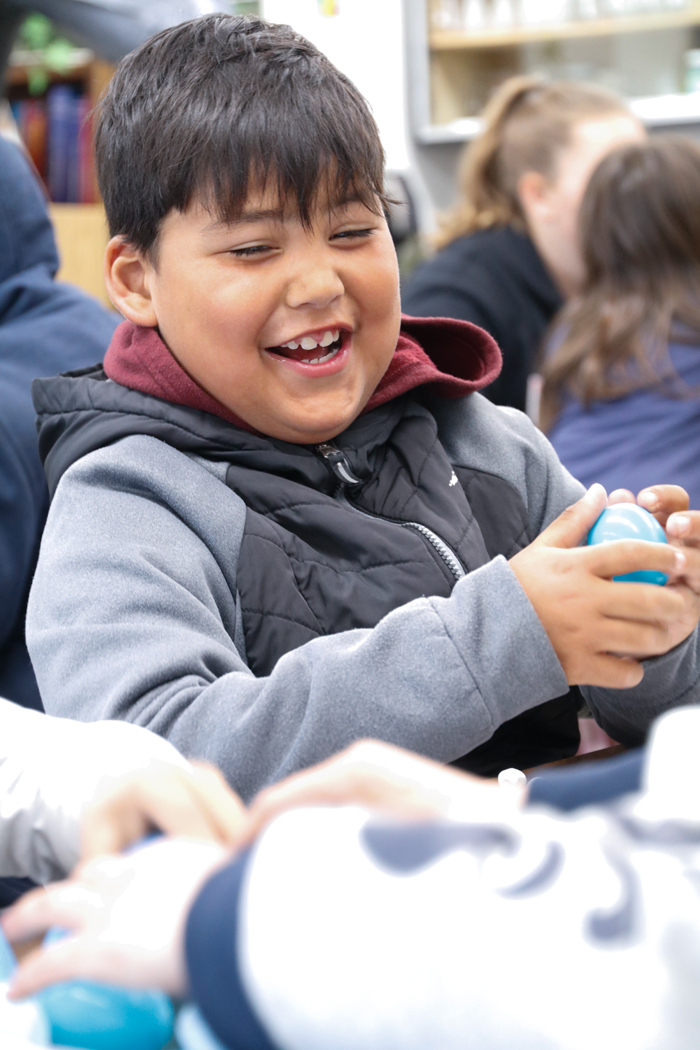
“Feed the Seabird” game featured a lesson in the nutritional value and fat content of different prey items to seabirds. We talked about how, like human foods, different chick meals contain different amounts of fat which is so important for chick growth and development. The beanbag toss feeding game was a fun follow-up to reinforce the ideas that food items have different value to seabirds. The girl’s team ended up winning by a very substantial margin. The boys were ready for a rematch. We will have to see if we can fit that in later in the week.
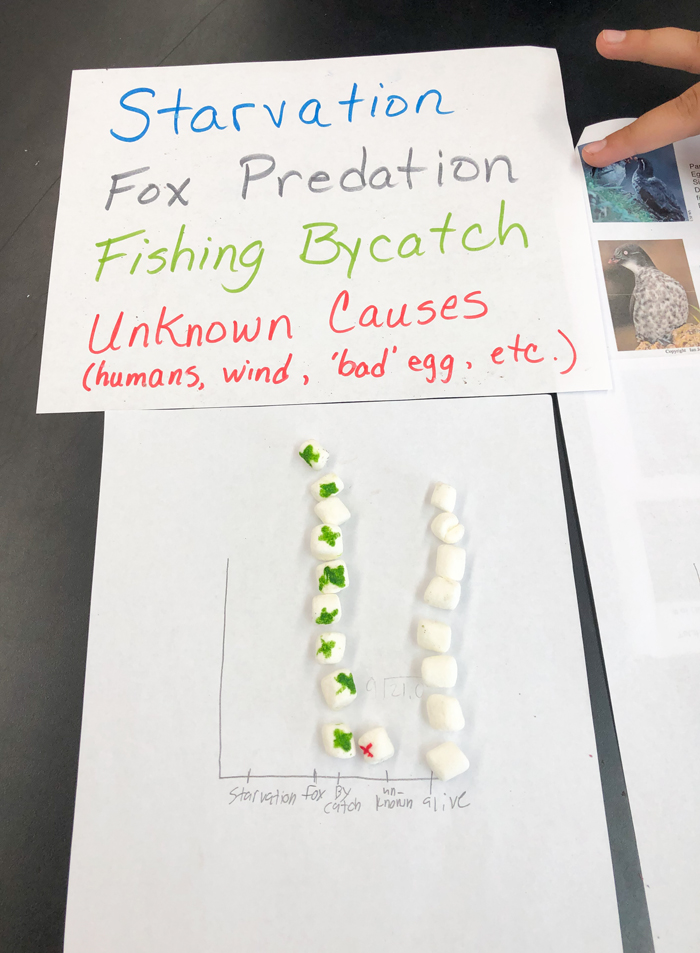
We all tried Ms. Tonia’s new game about the threats to seabird eggs. After learning detailed information about their team’s seabird species, campers hurried to the playground to find eggs color-coded to their team’s seabird. Back inside they discovered the fate of each egg. Some eggs survived, some eggs were lost to foxes, parental or chick starvation, bycatch or even unknown causes. Each team graphed their results and calculated percent survival results. Some teams had about 50% egg survival while some weren’t so lucky. However, these results can be typical in nature.
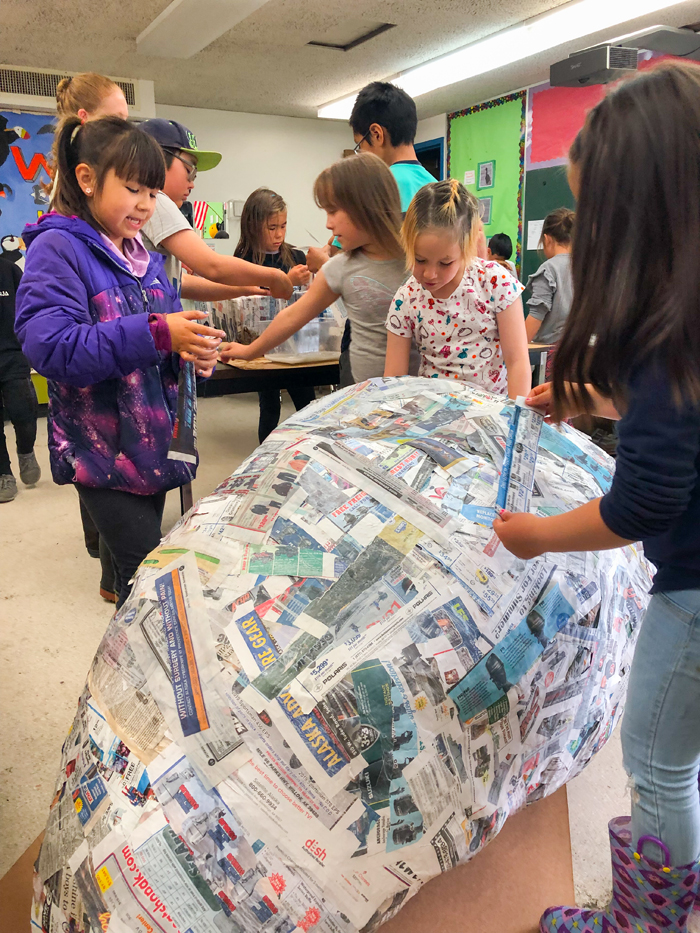
After taking a detailed look at seabird feathers and feather structure it was time for YCC intern, Chauncey, to teach a lesson about the effect of oil on feathers. After discussing oil spills and their negative effects on seabirds, Chauncey had the young campers run experiments on Red-legged Kittiwake feathers from birds that had been subsistence hunted. We observed, drew and weighed out feathers after exposure to water, oil and Dawn dish soap. The feathers weighed more and lost their ability to repel water after being soaked in oil. The Dawn broke up the oil and the feathers weighed less after the cleanup. It was fun to see the Dawn break up the oil like magic as soon as it dropped into the petri dish. Chauncey did a good job of putting the experiment in context as he talked about historic oil spills, their effect on seabirds and human efforts to help oiled birds.
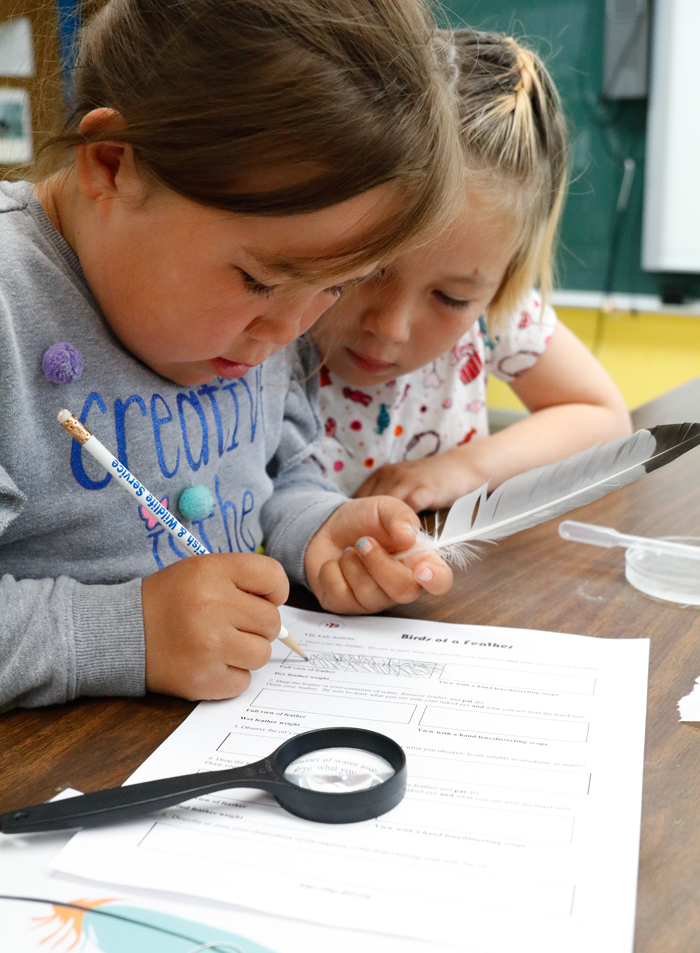
We all enjoyed the messy fun of paper mache as we built cliff rocks, a puffin burrow and a big, giant murre egg. We will use all of these awesome props for this year’s educational plays.
